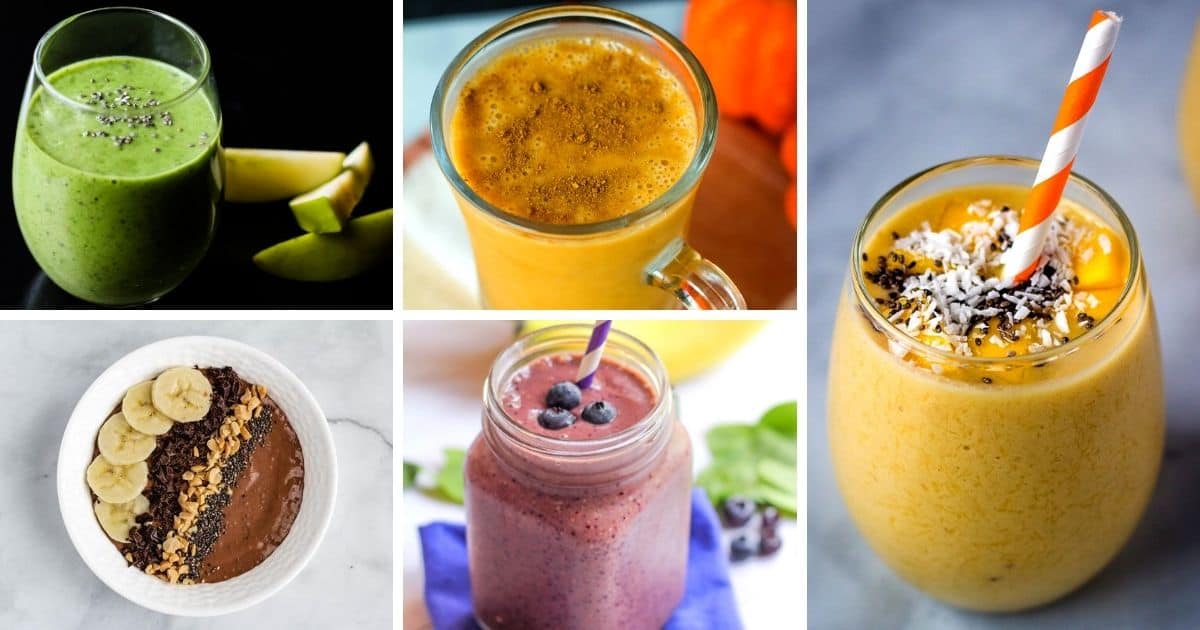Unlock the vibrant energy within nature’s bounty! Imagine a world where your daily boost isn’t a sugary crash, but a sustained surge of vitality fueled by the earth’s finest ingredients. This journey delves into the art of crafting plant-based smoothies—power-packed potions designed to revitalize your body and mind. We’ll explore the key ingredients that provide a natural energy lift, crafting recipes tailored to your unique needs, from pre-workout fuel to post-workout recovery. Discover how to optimize your smoothie creation for maximum impact, avoiding common pitfalls and unlocking the secrets to a consistently energized you.
Prepare to transform your daily routine with delicious, nutritious, and energizing plant-based smoothies. We’ll uncover the science behind the sustained energy these blends offer, providing detailed recipes and expert tips to guide you on your path to a more vibrant, energetic life. Get ready to blend your way to a healthier, happier you!
Addressing Common Concerns
Plant-based smoothies, while brimming with vibrant nutrients and offering a delicious way to boost your energy, can present some potential hurdles. Understanding these challenges and implementing simple solutions will ensure your smoothie journey is both enjoyable and effective in providing sustained energy throughout your day. Ignoring these potential pitfalls could lead to inconsistent energy levels and even nutritional imbalances.
Blood Sugar Spikes and Nutrient Deficiencies
Unbalanced plant-based smoothies can contribute to blood sugar spikes followed by energy crashes. This often occurs when smoothies are heavily reliant on quick-digesting carbohydrates like ripe bananas or concentrated fruit juices without sufficient fiber or protein to slow down the absorption process. Similarly, relying solely on fruits and neglecting sources of protein and healthy fats can lead to nutrient deficiencies, impacting energy levels and overall well-being. To counter this, incorporate sources of healthy fats like avocado, chia seeds, or nut butters. These fats not only add creaminess but also promote satiety and slow the release of sugars into the bloodstream. Including protein sources, such as protein powder derived from peas, soy, or brown rice, further moderates blood sugar response and provides sustained energy. A balanced smoothie should be a harmonious blend of carbohydrates, proteins, and fats for optimal energy. For example, a smoothie with spinach, berries, almond milk, chia seeds, and a scoop of pea protein powder provides a good balance of nutrients for sustained energy.
Macronutrient Balance for Sustained Energy Release
The key to sustained energy from plant-based smoothies lies in achieving a balanced ratio of macronutrients: carbohydrates, proteins, and fats. Carbohydrates provide immediate energy, proteins support muscle function and satiety, and fats offer sustained energy release and essential fatty acids. A well-balanced smoothie should ideally include a combination of complex carbohydrates (like oats or sweet potatoes), protein (like hemp seeds or tofu), and healthy fats (like avocado or nuts). The ideal ratio will vary depending on individual needs and activity levels, but a good starting point could be a 40/30/30 split of carbohydrates, protein, and fat respectively. For instance, a smoothie containing oats, berries, almond butter, and spinach provides a good balance of macronutrients, promoting sustained energy. Avoid smoothies that are predominantly composed of just one macronutrient type, as this can lead to energy fluctuations and imbalances.
Preventing Smoothie-Related Issues
Careful preparation techniques can prevent common smoothie problems. Understanding these techniques ensures a consistently smooth and delicious result.
- Separation: Smoothies can separate due to differences in density. To prevent this, blend all ingredients thoroughly, especially those with a higher fat content, and consume immediately after blending. Adding a thickening agent like a banana or a small amount of oats can also help.
- Overly Thick Consistency: If your smoothie is too thick, add more liquid gradually until you achieve your desired consistency. Start with a small amount of liquid and blend again before adding more. Use a liquid that complements the flavor profile of your smoothie – almond milk, coconut water, or even a bit of orange juice can work well.
- Lumpy Consistency: Ensure all solid ingredients are chopped or sliced finely before blending to prevent lumps. Frozen fruits and vegetables should be allowed to thaw slightly, or use a high-powered blender capable of handling frozen ingredients effectively.
A Step-by-Step Guide to Creating Your Own Plant-Based Energy Smoothie

Crafting a vibrant, plant-based energy smoothie is easier than you think! This recipe provides a delicious and nutritious foundation, easily adaptable to your preferences and dietary needs. The key is to balance fruits for sweetness, greens for nutrients, and healthy fats for sustained energy.
The Versatile Plant-Based Energy Smoothie Recipe
This recipe serves as a springboard for your own creative concoctions. Feel free to experiment with different fruits, vegetables, and liquids to discover your perfect blend.
- Gather Your Ingredients: Begin by assembling your ingredients. Imagine a vibrant array: a handful of spinach, bursting with deep green; a ripe banana, its yellow skin hinting at the sweet creaminess within; a juicy orange, its segments promising a tangy burst; a tablespoon of almond butter, its rich, nutty aroma filling the air; and a cup of unsweetened almond milk, its pale hue promising a smooth texture. A small knob of fresh ginger, offering a subtle spicy warmth, completes the collection.
- Prepare the Ingredients: Wash and roughly chop the spinach. Peel and slice the banana. Segment the orange. Measure out the almond butter and almond milk. Peel and finely grate the ginger. The visual is one of organized efficiency, a mise en place of nature’s bounty.
- Combine Ingredients in a Blender: Add the spinach, banana, orange segments, almond butter, and ginger to a high-powered blender. The blender, a sleek silver cylinder, awaits its transformation. The colors are already blending – deep green, sunny yellow, and bright orange promising a visually stunning result.
- Add Liquid and Blend: Pour in the almond milk. Secure the blender lid. Begin blending on a low speed, gradually increasing to high. Watch as the ingredients transform from separate components into a homogenous, vibrant green liquid. The sound of the blender is a symphony of whirring blades, creating a masterpiece of texture and taste.
- Adjust Consistency and Taste: If the smoothie is too thick, add more almond milk, a splash at a time, until you reach your desired consistency. If it’s too thin, add a few ice cubes for a refreshing chill and thicker texture. Taste and adjust sweetness or tartness by adding a touch more fruit or a squeeze of lemon juice. The final product should be a smooth, vibrant green liquid, visually appealing and inviting.
- Serve and Enjoy: Pour the smoothie into a glass. Garnish with a few orange segments or a sprinkle of chia seeds for added visual appeal and nutritional value. The final smoothie sits proudly, a testament to your culinary creation. Enjoy the vibrant taste and invigorating energy.
Ingredient Substitutions and Variations
This recipe is incredibly versatile. Swap the spinach for kale, romaine lettuce, or even a handful of fresh herbs like mint or basil. Replace the banana with mango, berries, or peaches for different flavor profiles. Other nut butters, such as cashew or peanut butter, can be used instead of almond butter. Coconut milk, soy milk, or even water can substitute the almond milk. Experiment to discover your perfect combination! For example, a tropical twist might substitute mango for banana, coconut milk for almond milk, and pineapple for orange. A greener smoothie might utilize kale instead of spinach and add a cucumber for refreshing coolness.
From pre-workout powerhouses to post-workout recovery elixirs, plant-based smoothies offer a delicious and effective way to naturally boost your energy levels. By carefully selecting ingredients, understanding their synergistic effects, and mastering the art of blending, you can craft personalized smoothies that cater to your specific needs and preferences. Embrace the vibrant world of plant-based nutrition and experience the transformative power of sustained, natural energy—one delicious sip at a time. Remember to listen to your body, experiment with different combinations, and enjoy the journey to a more energized you!
FAQ Insights
What if I don’t like the taste of certain ingredients?
Experiment with different fruits, vegetables, and spices to find combinations you enjoy. Many recipes offer substitution suggestions to customize the flavor profile.
How long can I store a plant-based smoothie?
It’s best to consume smoothies immediately after blending for optimal freshness and nutrient retention. If storing, refrigerate for no more than 24 hours.
Are plant-based smoothies suitable for everyone?
While generally healthy, individuals with specific dietary restrictions or allergies should adjust recipes accordingly and consult with a healthcare professional or registered dietitian.
Can I add protein powder to my plant-based smoothie?
Yes, adding plant-based protein powder (pea, soy, brown rice, etc.) can enhance the smoothie’s protein content and promote satiety.


